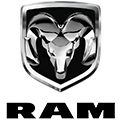Sign up for the newsletter
Sign up for the Stellantis Communications Newsletter and stay updated on all the news.
27 Apr 2022
Automotoretrò: the Stellantis Heritage department presents four rarities from 1972 and opens the Heritage HUB at Mirafiori for extra special guided tours
From April 28th to May 1st, Lingotto Fiere in Turin will host the 39th edition of Automotoretrò, the traditional show event focused on vintage motoring Not to be missed among more than 1,200 exhibitors, the Stellantis Heritage department leverages the historical legacy of the Alfa Romeo, Fiat, Lancia and Abarth brands. Its stand is wide-ranging, with four very different cars brought together by their 50th anniversary (1972-2022) and their red bodywork
- From April 28th to May 1st, Lingotto Fiere in Turin will host the 39th edition of Automotoretrò, the traditional show event focused on vintage motoring
- Not to be missed among more than 1,200 exhibitors, the Stellantis Heritage department leverages the historical legacy of the Alfa Romeo, Fiat, Lancia and Abarth brands. Its stand is wide-ranging, with four very different cars brought together by their 50th anniversary (1972-2022) and their red bodywork
- The Alfa Romeo Alfetta Spider Coupé, Fiat 124 Abarth Gr. 4, Fiat 126, and the iconic Lancia Fulvia HF 1600 “14” that won the 1972 Rallye de Monte-Carlo recall the big moments for four brands that have made automotive history, and continue to this day to convey current values to fans
- For the show, eight extra special guided tours will be held at the Heritage Hub on Via Plava, the exhibition space that houses around 300 iconic cars in the restored Officina 81, part of the Mirafiori industrial complex. The visits will take place from Thursday to Sunday, at 10 am and 5 pm, will last about two hours, and will cost € 25 per person.
Fifty years old, but it doesn't feel like it: this could be the main reason for the Stellantis Heritage department’s display for the 39th edition of Automotoretrò, a long-standing event focusing on vintage cars, due to be held at Lingotto Fiere, Turin, from April 28th to May 1st.
Drawing from a vast fleet of its own (over 600 vintage cars), the line-up at the Heritage department stand consists of a FIAT 124 Abarth Rally Group 4 racing car, the first prototype FIAT 126 to roll off the lines at the Cassino plant, and the Lancia Fulvia Coupé 1.6 HF that triumphed at the 1972 Rallye de Monte-Carlo, driven by Sandro Munari and Mario Mannucci. The showcase is completed by a unique specimen, the Alfa Romeo Alfetta Spider Coupé designed by Pininfarina, based at the Alfa Romeo Museum in Arese: all the cars are brought together by their notable connection to the year 1972 and by their red bodywork.
In line with its mission to retrieve, safeguard and leverage the historical legacy of Alfa Romeo, Fiat, Lancia and Abarth, Heritage is using its display to recall and celebrate the values of the four brands, offering fans a roundup of very different types of cars: racing models, mass-produced small cars and a major one-off.
Plus, for the now historic exhibition at Lingotto, eight extra special guided tours are due to take place at the Heritage Hub, a space displaying around 300 cars from the Stellantis collection.
On each two-hour guided tour, visitors can discover the 64 cars that enliven the eight themed areas covered by the space, two exhibitions focusing on the most significant engines produced by Italian brands in over a century of history, and a display documenting the history of the Mirafiori plant.
The visits will take place at 10 am and 5 pm on Thursday, Friday, Saturday, and Sunday, and will cost €25 per person. A reduced rate of €15 per person is available for under-18s.
For further information and reservations, only required for groups of at least six, send an email to heritagehub@stellantis.com
Like at previous editions of the historic Turin motor show, visitors to Automotoretrò can come into close contact with the most exciting cars and motorcycles from the past, both racing and mass-produced models, from all over Europe. There will also be plenty of room for scale models, original spare parts, car sales, and specialized publishing, as well as a packed schedule of conferences and meetings with famous names in the sector.
For the first time, an entire section will also be fully dedicated to sustainable mobility. For more information, visit the show’s official website: https://www.automotoretro.it
Fiat 124 Abarth Rally Group 4
The production of the Fiat 124 Abarth Rally began in 1972 and ended in 1975, after 995 units had rolled out of the Abarth workshops on Corso Marche, Turin.
Compared to the Fiat 124 Sport Spider it is based on, the Fiat 124 Abarth Rally Group 4 is equipped with a more powerful and much more lightweight engine, made possible by a fiberglass roof and aluminum doors.
After a tune-up by the Abarth Racing Team, the car made its debut during the 1972 racing season, then continued its career until 1975. One year later in 1976, it was replaced by the 131 Abarth Rally.
Equipped with a 1756-cc engine capable of delivering up to 215 hp of power in its various evolutions, the 124 Abarth Rally has two victories in the European Rally Championship (1972 and 1975) under its belt, and won the Constructors' World Championship four seasons in a row (from 1972 to 1975).
The model on display featured in the string of victories by Maurizio Verini, who took the 1975 European Rally Championship with five wins and one second place. It includes a new bonnet with air intakes and two additional recessed headlights, enlarged rear fenders with an air intake for the brakes, and the two-tone livery used by the official Fiat Abarth team in the 1974 and ’75 racing seasons: in both years, the 124 Abarth Rally was also runner-up in the World Championship.
FIAT 126 prototype
In 1972, 16 years after its launch, FIAT needed to start thinking about replacing its standard-bearer, the 500 that got Italy onto the road. Mobility needs had changed, journeys were becoming longer, and traffic was getting heavier: the need for comfort and safety was increasing, and spaciousness became an essential requirement. Based on the experience gained with small displacements, FIAT looked into a new car to confirm the features of handling and economy that even so took on a more modern and functional design, clearly inspired by its “big sister”, the FIAT 127: this was the genesis of the FIAT 126.
It inherited its technical and mechanical specifications from the 500, but took its performance and spaciousness from the next segment up: angular lines with four comfortable seats and a top speed of 105 km/h. A self-supporting body with a differentiated structure and a streamlined system of reinforcements, for a particularly rigid passenger compartment resistant to passive impacts: safety was further increased by the brakes controlled by separate hydraulic circuits. The suspension consisted of four independent wheels for maximum comfort; it had very broad visibility for its small size.
A robust 600-cc twin-cylinder engine was selected, as a natural evolution of the 499.5-cc variant seen in almost four million FIAT 500 models.
Aesthetics were also a major factor, so the FIAT 126 was presented as a car where great attention was paid to its finishes: the seats and sides were upholstered in faux leather, the entire floor was covered with a nylon mat, and the cabin was padded with a layer of sound-absorbing fiber.
As for the 500, it was an immediate success: production would only end in 2000 after over 4.6 million units had been sold throughout Europe, making the 126 the longest-lived rear-wheel drive model ever made by FIAT. The model on display is the last remaining prototype, produced at the Cassino plant in 1972. A few of its details differ from the mass-production model, including the “provisional” chassis number and the difference in the position of the engine air intake, placed here behind one of the bonnet grilles. It also features aesthetic solutions that would later be implemented in the cars that formed part of the next series, such as tightly spoked wheels.
Lancia Fulvia Coupé 1.6 HF “14”
Unveiled in 1965, the Fulvia Coupé was designed by Piero Castagnero, who drew inspiration from the lines of the Riva speedboats at that time. Powered by a 4-cylinder V engine with a displacement that would rise from 1.2 to 1.6 liters, the car was an immediate commercial success and would quickly be considered for use in racing.
After it had become one of the big names in rallying in the late 1960s, the Fulvia Coupé would spearhead the HF Lancia Racing Team for several seasons. Its greatest success – an unexpected one against more recent cars with much higher displacements and output – was victory at the 1972 Rallye Automobile de Monte-Carlo, with Sandro Munari and Mario Mannucci behind the wheel.
The car on display here, still bearing the signs of that memorable feat on its bodywork, features the 4-cylinder 1.6-liter tuned up to 160 hp and the iconic “racing red” livery, with the bonnet painted matte black to prevent reflections and embellished by the wording “Lancia - Italia”; it is known to enthusiasts all over the world as the “Fulvia 14”, for its number in the Monaco race.
Alfa Romeo Alfetta Spider Coupé
The year 1972 also witnessed the launch of the Alfetta, a milestone in Alfa Romeo history for the technical solutions it introduced, first and foremost the transaxle layout. The decision for the stand to feature the spider coupé version produced by Pininfarina rather than the contemporary sedan made at Arese serves as a further tribute to the city hosting Automotoretrò: indeed, the concept car was unveiled at the Turin Motor Show, just like the other cars on show on the Heritage stand.
Taking into account market trends and new safety regulations, strongly influenced by the U.S, directives issued in 1971 at the International Technical Conference on Experimental Safety Vehicles (ESV), the car was made by Pininfarina with a “targa” body or hardtop, considered safer than a spider in the event of a rollover. The prototype also features pronounced wedge lines and bold black rubber bumpers, two aesthetic solutions that would prove great successes in automotive design in the 1970s. The removable roof is made of a material of variable transparency: black when installed on the roof, transparent if overlaid onto the rear window, where the latches to fasten it are located. Its engine is the 1779-cc straight-four seen in the Alfetta sedan, which delivers 122 hp at 5,500 rpm.
Turin, April 21th, 2022
Other content




























